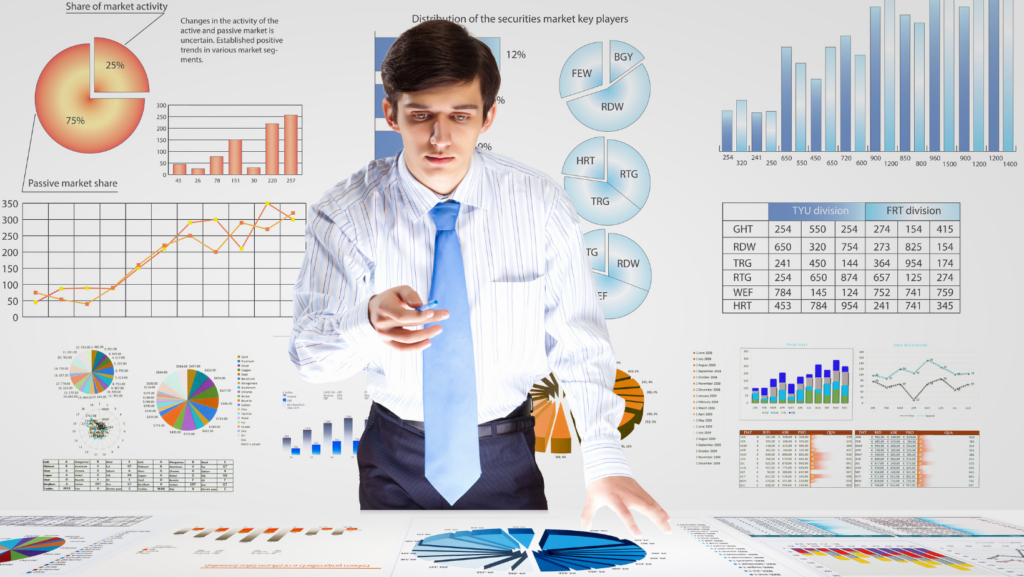In the digital age, data’s become the new oil. Businesses, governments, and societies are now fueled by information, and those who can interpret this data hold the keys to the future. Enter the world of data science and analytics jobs, where every bit and byte can unveil patterns, trends, and insights that can drive strategic decisions.
These professions aren’t just about numbers and algorithms. They’re at the forefront of innovation, shaping industries from healthcare to finance, and even entertainment. Whether you’re a seasoned professional or a curious newcomer, understanding the landscape of data science and analytics jobs is essential. Let’s dive into this exciting field, exploring its opportunities, challenges, and the skills needed to thrive.
Data Science and Analytics Jobs
By their very nature, data science and analytics jobs form the backbone of today’s digital-dominated landscape. Ever-growing digital data brings increased demand for professionals skilled in interpreting and unveiling the stories behind the numbers. The focus here lies in understanding the metamorphosis of this dynamic field and its potential going forward.
Growth in the Industry

Zooming in, the surge in data generation led to an exponential growth in the data science and analytics field. A report by LinkedIn ranked data science as one of the most promising jobs in 2019, with potential for significant growth in the following years. Notably, the U.S. Bureau of Labor Statistics projected an 11% growth rate for computer and information research scientists, a group that includes data scientists, between 2020 and 2030.
Instigate this growth rate against comparable fields and it becomes clear that data science and analytics jobs outstrip many traditional and emerging roles. Combining this growth with attractive salaries makes data science and analytics jobs a much sought after career field.
Key Sectors Driving Demand

Beyond sheer numbers, the breadth of sectors relying on data science and analytics is equally impressive. Three sectors spearhead this demand:
- Healthcare: Making use of patient data to predict disease outcomes, improve patient care, and optimize hospital management.
- Finance: Utilizing algorithms to detect financial fraud, streamline investment strategies, and improve customer service.
- Entertainment: Capitalizing on consumer data to personalize content, improve user experience, and inform strategic decision-making.
In essence, data has taken center stage in industries far and wide. Professionals, equipped with data science and analytics skills, can tap into these opportunities to carve successful careers. Moreover, they stand a chance to make significant impacts on industries, from healthcare to finance and beyond.
Essential Skills for Data Scientists and Analysts
Statistical Analysis and Machine Learning
Statistical analysis and machine learning stand as core skills for data professionals. Thorough knowledge of statistical methods aids in making sense of volumes of data, accelerating the process of turning raw data into actionable insights. For instance, regression analysis, hypothesis testing, and probabilistic modeling enable the understanding of trending patterns and relationships in data.
Programming Languages Popular in Data Science

Proficiency in certain programming languages constitutes a fundamental requirement for data science and analytics roles. The language of Python, recognized for its simplicity and powerful libraries like Pandas and Matplotlib, provides data professionals with the tools needed to analyze and visualize data effectively.
The R language, too, plays a prominent role in the data science arena. The language’s strong statistical capabilities and hundreds of packages make it an attractive option for statistical modeling and graphical representation of data.
Data Visualization and Communication
Data visualization and communication skills prove instrumental in the world of data science. They enable professionals to present complex findings in a manner that’s easily understandable for both technical and non-technical audiences. Skills in using visualization tools like Tableau, Power BI, or Python’s Matplotlib come in handy for this.
Professions Aren’t Just About Numbers and Algorithms
It’s clear that data science and analytics jobs are pivotal in the digital age. They’re the driving force behind strategic decision-making across various sectors, leveraging skills such as statistical analysis and machine learning. They’re not just about crunching numbers – they involve a deep understanding of the data landscape and the ability to adapt to new technologies.
